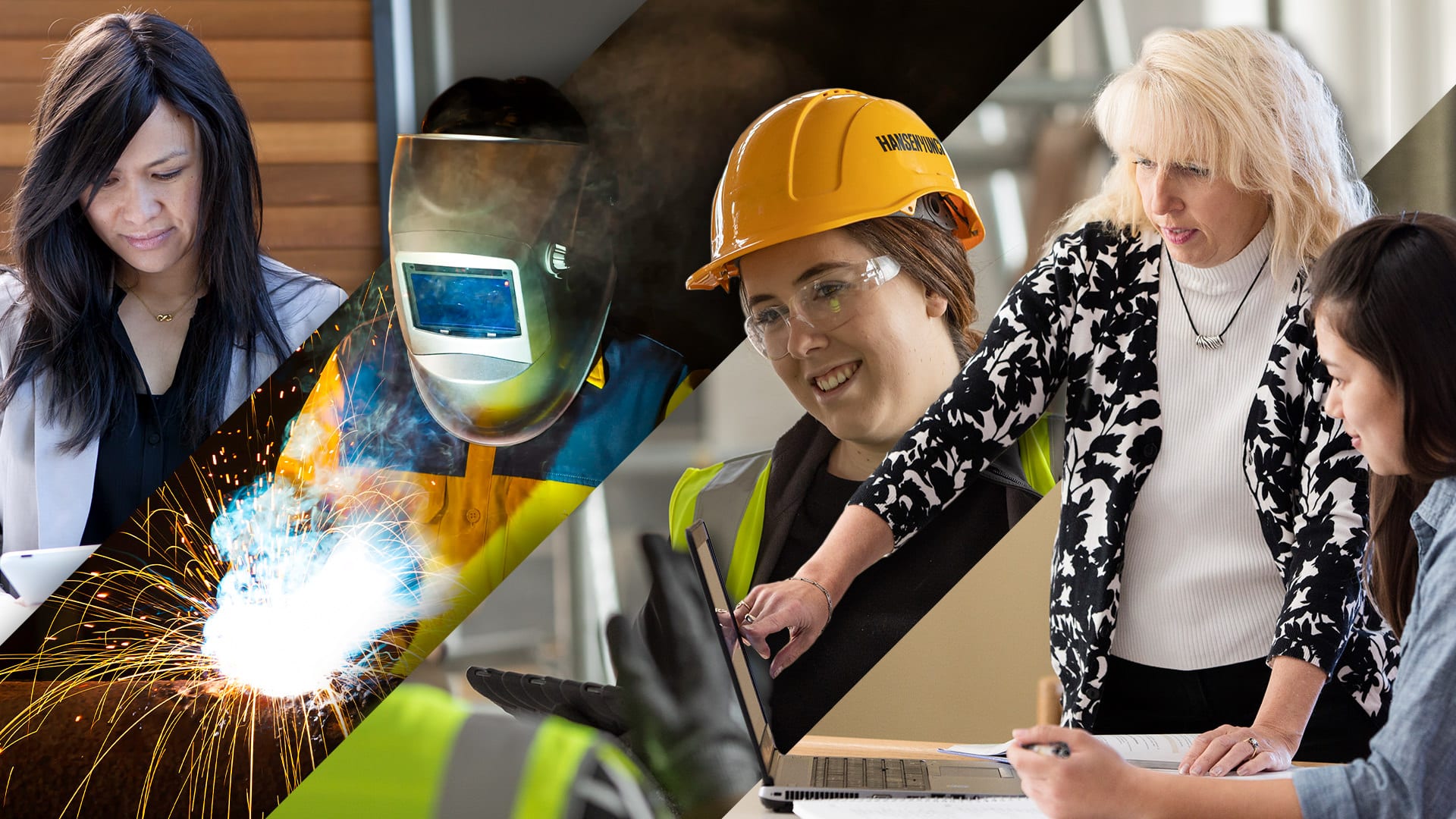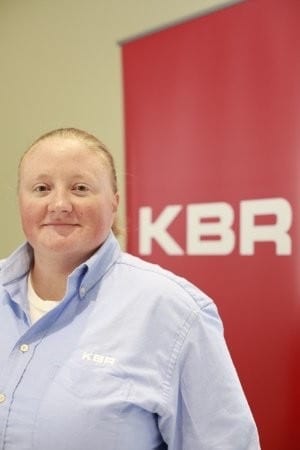
Recruitment is one of the greatest hurdles we face in the industry today. As the New York Times journalist Jason M. Bailey wrote, “With the retirement of baby boomers in full swing, the construction industry is grappling with its biggest challenge: refilling its pool of employees. But it faces significant resistance among younger workers.”
Getting younger generations — particularly women and diverse groups of people — into construction is tough, mainly because there are plenty of long-held (but incorrect) beliefs about the industry. Misconceptions such as construction being unsafe and blue-collar in nature continue to persist.
But the truth is that the construction industry is a multi-dimensional field that offers so many interesting, rewarding, and fulfilling career opportunities.
The first step in getting young and new talent onboard is helping them see that.
The good news? The industry already has many incredible construction professionals who are breaking down misconceptions about what it means to work in construction. In this article, we explore how construction professionals, educators, skilled trade professionals, and innovators are helping to change perspectives of the industry.
One of the keys to getting young professionals to seriously consider construction as a career is to use non-traditional ways to raise awareness about the construction industry.
Milanka (@milankabee), a 25-year-old geologist who's now working in construction, offers a great example of how to accomplish this. Milanka posts informal and candid videos about her experiences as a woman working in construction, and she does this through an unexpected channel: TikTok.
One of her videos, which breaks down the common stereotypes about women in construction, recently went viral, garnering millions of views and numerous comments from females in the industry as well as young women who are interested in pursuing a construction career.
According to Milanka, the video came about during a particularly slow day on the job. "The day I made the TikTok that went viral, I was waiting 6 hours for concrete trucks to show up. I had finished all my reports and forgot my book at home,” she recalls.
“Since there wasn’t much action that day, I decided to share some of my noteworthy experiences. I hope it brings attention to antiquated views and misconceptions that still exist in construction in a lighthearted and relatable way.” However, she did explain that some of what she shared stood out in her memory because they were not common experiences from her point of view.
Still, she received incredible responses from women when she posted the video. "The comment section turned into a space for women already in the industry to share their own experiences, making jokes, and giving advice to each other. It really was incredible to watch this community come together so quickly.”
Her video also spurred interest by those thinking about a career or were new to the industry. “I also had younger women DMing me for advice on how to get into the industry, what to study in school, for field gear recommendations and tips for staying warm in the field, and sometimes just encouragement. If you love something and it really clicks with you, why let anything stop you?”
The construction industry faces a significant skilled labor shortage. The 2020 outlook report from the Association of General Contractors of America found that 81% of contractors are finding it difficult to fill positions.
One way to address this is to focus on recruiting young professionals who’ll stay and grow within the construction industry.

Holley Thomas, Senior Technical Services Professional – Field Construction at KBR and an award-winning welder, talks about how construction can attract younger people and women into the trades.
Holley, who started her career as a welder, unexpectedly fell in love with the trade when she had to take a welding class while completing her Associate of Applied Science degree.
“I fell in love! I had no idea that when I put my welding hood down and started welding, that everything else would fade away. There I was, in my last semester of an AAS degree, and found something I truly love to do.”
So, Holley pursued a career in construction and never looked back. According to her, in order to encourage women to forge a similar path, they should be exposed to the industrial and manufacturing community at a young age.
"When I was in high school, I wish there had been an opportunity in a shop environment to expose me to courses in plumbing, carpentry, welding, pipe fitting, and electrical. This would’ve shown me that there was a whole set of valid career opportunities out there that don’t require a four-year degree that I had not considered."
Holley continues, "Educators should work toward making these required classes and to be sure they are accessible to the vast majority of students. Industry executives attempting to recruit youths and minorities into trade fields should use successful youths and minorities in their efforts. When young minds see someone like them doing something they think they want to do, it becomes a reality, and one’s perception is their reality."
Many construction companies recognize they need to meet young talent where they are at. “At Level 10, we’re trying to enhance knowledge about the construction industry at an earlier age," says Kelly Hoskovec, Project Executive at Level 10. "That means we connect with students in high school and college for lunch and learns or presentations to bring awareness to the industry. We’re also looking at ways to work with Girls Garage, a non-profit construction school that’s focused on introducing anyone of female association to the industry, too.”
While skilled trades often don’t require a formal degree, there are many paths in construction that do. As such, educators play a major role in shaping the workforce and ensuring that the industry continues to attract bright and diverse candidates, including underrepresented populations like women and people of color.

Dr. Noha Saleeb, Associate Professor in Creative Technologies and Construction at Middlesex University, says that educational institutions can attract diverse individuals by highlighting the various work roles and activities that construction professionals can get into.
According to her, it’s important for educational institutions to "shape the mentality of learners to accept others and nurture a collaboration mindset with different people with diverse skillsets and backgrounds in team-like environments."
Doing so would give graduates the ability to implement change management that's inclusive and diverse.

Dr. Avril Behan, Dean of College of Engineering & Built Environment, Technical University Dublin (TU), says that schools must collaborate closely with the construction industry to promote courses and careers. "Both groups are working to adapt this messaging to attract more participants from non-traditional audiences. This includes the use of outreach programs and, in Ireland, particular use is made of Transition Year activities, which enable sampling of disciplines and skills."
According to Avril, educational institutions must also support employment initiatives around equity, diversity, and inclusion (EDI).
TU Dublin, for its part, "works closely with a number of strategic industry partner on EDI improvement projects such as providing scholarships to students who might otherwise not be able to complete their studies, mentoring schemes to support students during their studies and in identifying the specialisations they might take, and prizes to recognise achievement."
She continues, “Educators also need to work closely with the industry to support meaningful lifelong learning for existing staff in new and emerging areas, including in relation to embedding sustainable practices and developing design thinking capabilities to address, among others, issues of universal design and bias removal.”
Of course, attracting students is just the first step. Just as important is upskilling individuals and preparing them for a fruitful construction career.
To do this, Noha says that higher education institutions (HEIs) should immerse students with real-life projects. "The focus is no longer on exams, but on project-based learning that uses industry software, existing projects, workflows, and processes as an essential part of their delivery. Students are taking on different industry roles within their educational group projects and asked to emulate construction procedures and work with relevant professional bodies for approvals etc."
Avril also highlights the importance of research and development when upskilling students.
“Historically, construction Research, Development & Innovation has not been as strong as other sectors. However, significant progress has been and is being made by construction companies integrating developments from the areas of standards adoption, single source of truth and end-to-end project information flow, predictive analytics, remote measurement (e.g., drones), off-site manufacturing, mixed reality, wearables, robotics, and the Internet of Things. HEIs are fertile grounds for testing and co-developing solutions to industry’s challenges, thus enabling the two groups to jointly create the future of the sector.”
She says, “the industry can support, monitor, and inform HEIs of skills needed, both immediate and future, particularly for HEIs with less developed research infrastructures. This is currently done through a range of mechanisms such as external examining, advisory and review panels, support for internships, adjunct lecturing, project setting, competitions, and challenges. Additionally, academics and industry representatives typically work side-by-side at the tables of professional and representative bodies to advance the cause of the sector.”
Taking these steps will help HEI staff identify future gaps in the market, so they can conduct the right R&D activities, leading to better educational offerings for students.
While the construction industry did not always have a strong track record for new technology, this is changing rapidly. Now, there are countless opportunities for technical talent, leaders, and innovators.

As Jennifer Suerth, the Vice President of Technical Services at Pepper Construction, puts it, “We are seeing this huge boom in construction where construction companies are becoming more focused on technology. So that could be anything from leveraging 3D models to analyzing the day-to-day type of technology that our operations teams are using.”
According to Jennifer, they’re also seeing a lot of laborers in the field who are upskilling. “Some of them are learning how to scan or learning how to do layout. I believe we should continue to empower these individuals to broaden their skillset so they can be more valuable players in the field.”
As for how tech and innovation are implemented at Pepper Construction, Jennifer says they have in-house software developers who are helping them with system integrations, analytics, and data visualizations. "All of these things allow our teams to work faster and more efficiently. And so, there are many tech roles at construction companies now that didn't exist ten years ago, or people just also didn't know about."
Part of improving innovation in construction lies in being more diverse, she says.
“I truly believe diversity is critical to have a successful business. Diversity — be it gender, ethnicity, and other backgrounds — brings about new ideas.”
“Historically, construction hasn’t improved much from a productivity standpoint, and that’s because the industry was made up of the same types of people making the same decisions. But now, we’re bringing in more diversity and more perspectives.”
Recently, Jennifer shared her thoughts on diversity and innovation in construction on the Digital Builder podcast. Listen to the full episode here.

Dr. Giovanna Brasfield, the former Vice President of Diversity and Inclusion (D&I) at Flatiron Construction (and now CEO & Principal Consultant at Brasfield & Associates), agrees on the significance of D&I and notes that the industry is starting to take steps in the right direction.
“We’re seeing a pivot for us overall, as far as prioritizing diversity and inclusion,” she says.
There’s still plenty of room to grow, though. As Giovanna puts it, “we, as an industry, need to assist our future leaders in their growth. It is imperative that we take the initiatives in the now to really look strategically at our pipeline when we come to leadership levels as well as entry levels.”
As an example, Giovanna points to LINXS, a women-centric resource group that she started as a joint venture between Flatiron, Flour, Dragados, and Balfour Beatty. “Every month, we take on a different area for professional growth. We have a leader coming in to discuss various topics, such as public speaking, confidence, negotiations, etc. It's a great initiative, and it’s something that women in our industry genuinely need.”
Part of that initiative involves having a designated youth coordinator whose focus is to partner with schools, districts, and community-based organizations to engage young adults and help them see the possibilities of a future in construction.
It’s important to show young people the possibilities, says Giovanna. “Far too often, our industry has been considered as something that's secondary. That's why it's important to have initiatives, like LINXS, that are "tapping into youth or high schools or educational institutions to showcase careers in construction at all levels and all positions."
Clearing up the misconceptions about working construction will go a long way in attracting bright, young professionals to the industry.
While we’re starting to get creative with driving awareness and recruitment, there’s still work to be done. And it’s up to all of us to break down antiquated perceptions and help others see how diverse and vibrant construction can be.
Leave a comment below and tell us your thoughts about breaking down industry misconceptions and bringing in younger and new talent into the industry.

May we collect and use your data?
Learn more about the Third Party Services we use and our Privacy Statement.May we collect and use your data to tailor your experience?
Explore the benefits of a customized experience by managing your privacy settings for this site or visit our Privacy Statement to learn more about your options.